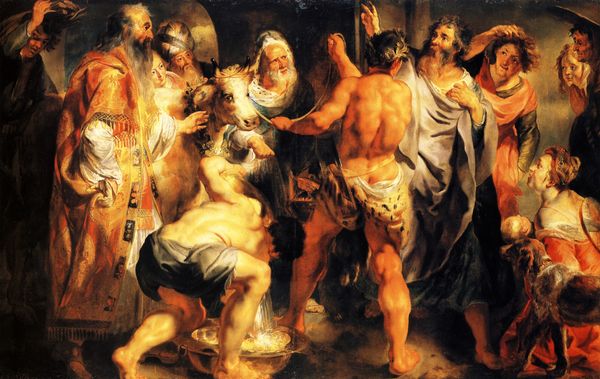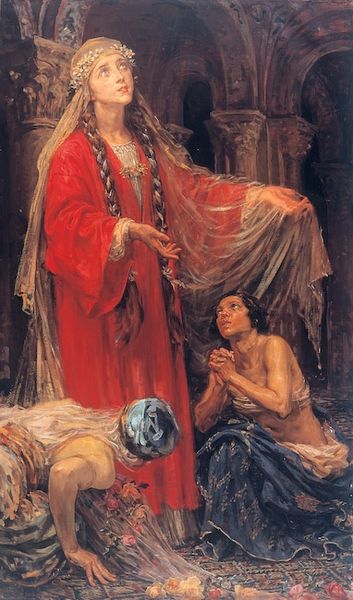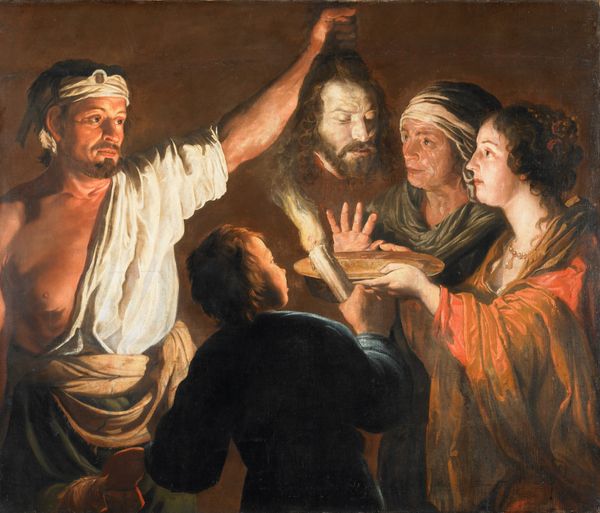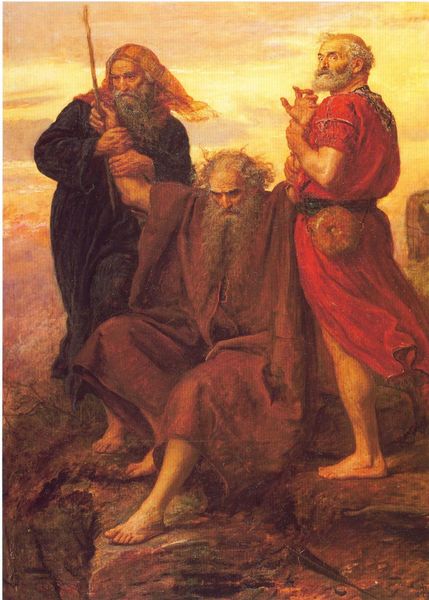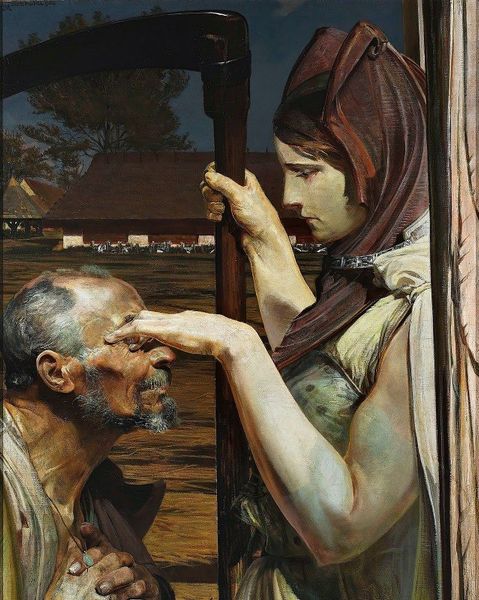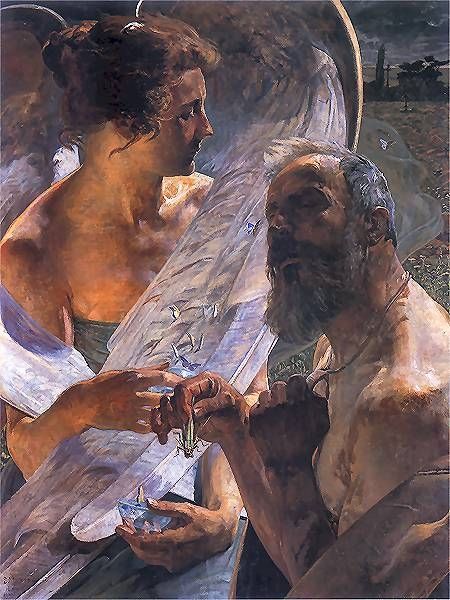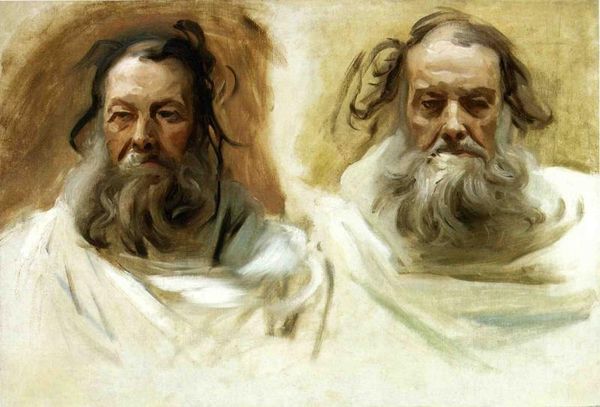
Dimensions: 69.5 x 98 cm
Copyright: Public domain
Curator: Welcome. Today, we are looking at "Law," an oil painting completed in 1903 by Jacek Malczewski. Editor: My initial response is that there's an unsettling tension here. The juxtaposition of the realistic portrait with these figures that appear to be taken directly from classical myth creates a real unease. Curator: Indeed. Malczewski's compositional structure employs a rather complex layering of symbolism. Notice how the clear profile of the man—presumably a portrait—is positioned centrally, framed by a Pan-like figure playing a flute on the right and a veiled figure bearing some kind of pole on the left. The subdued tonality only serves to intensify the effect. Editor: Right. We're looking at the painting at a time of nascent Polish nationalism, which helps to create the sense that these figures, whether allegorical or realist, are charged with meanings about governance. Given Poland's complicated relationship with occupying forces and legal authority, is the man's neutral gaze meant to convey that justice is, to some degree, indifferent or impartial to political machinations? And why is the Pan figure, so linked with Dionysian frenzy and freedom, present here? Curator: Formally speaking, there's also an interesting conflict in styles. The brushwork on the portrait is much more controlled, allowing for clarity and anatomical fidelity, whereas the mythological figures use a looser style that's open to interpretation and which feels stylistically more attuned to Symbolism. It suggests a purposeful artistic choice, emphasizing the complexity of the ideas he's conveying. Editor: I read this complexity as Malczewski confronting the challenge of applying an abstract concept, “law,” to real socio-political dynamics. There’s nothing clear or simple about how that functions. And that perhaps is what creates the lasting tension for viewers like me. We bring that same messy world and expectation of ambiguity to our viewing. Curator: A worthwhile reading indeed. The formal properties, such as contrast of styles and carefully placed figures, support such readings. Editor: Exactly, and perhaps that dissonance, like legal ambiguities, is precisely what Malczewski wanted us to confront.
Comments
No comments
Be the first to comment and join the conversation on the ultimate creative platform.

